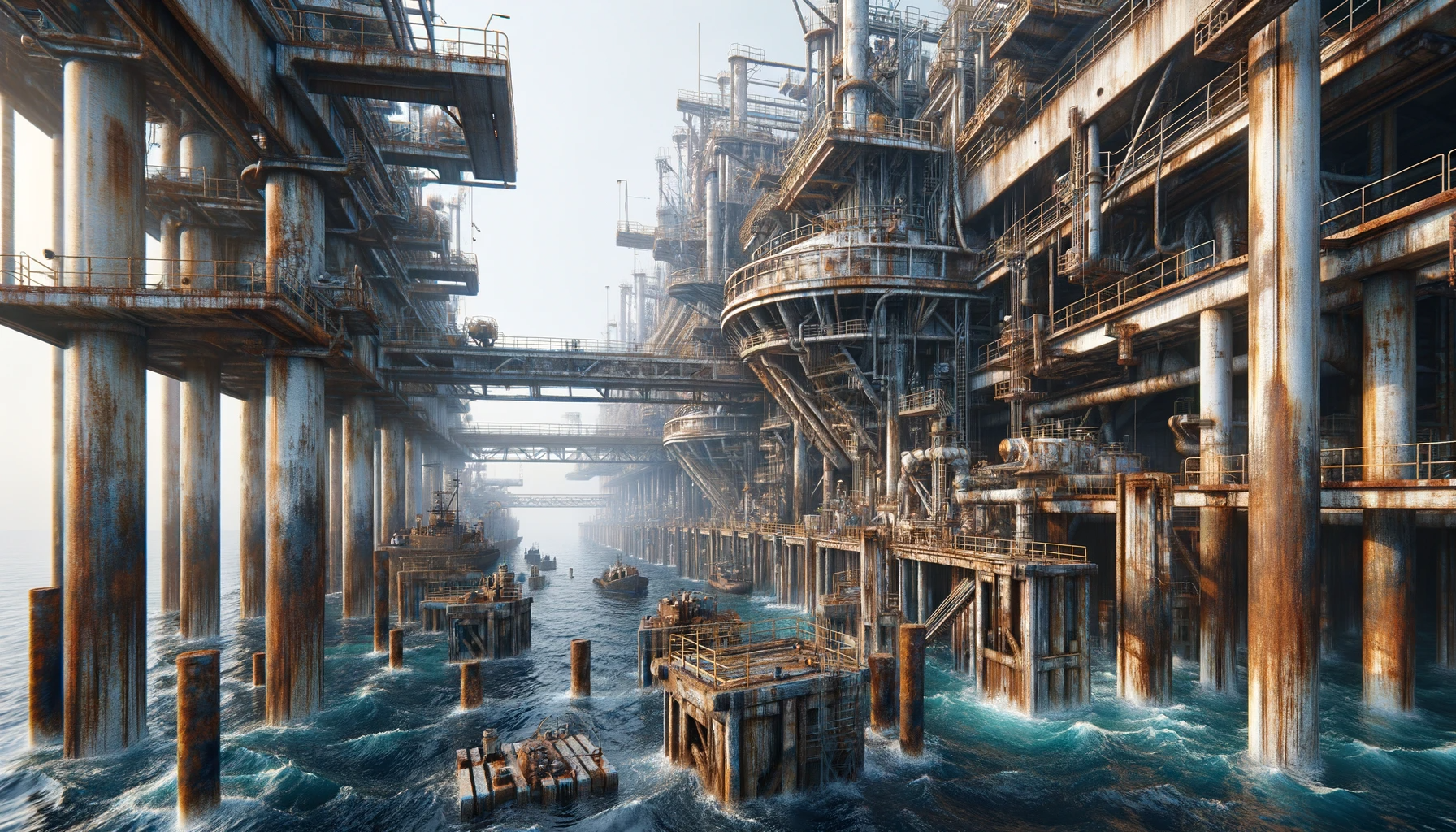In a paper published in the journal Materials Degradation, researchers developed an intelligent framework centered on a data-driven model to forecast free atmospheric corrosion in marine steel structures. Utilizing a group method of data handling (GMDH) neural network, this framework processed sensor data collected at 30-minute intervals over 110 days, encompassing free atmospheric corrosion and various environmental factors.
 Study: Intelligent Forecasting of Free Atmospheric Corrosion in Marine Steel Structure. Image credit: Generated using DALL.E.3
Study: Intelligent Forecasting of Free Atmospheric Corrosion in Marine Steel Structure. Image credit: Generated using DALL.E.3
The study also integrated the Shapley additive explanations (SHAP) technique to analyze the impact of environmental elements on atmospheric corrosion. Researchers assessed the framework's performance using selected comparative metrics, revealing its high accuracy and efficiency in predicting the progression of free atmospheric corrosion in marine settings.
Background
Steel structures face severe corrosion in marine environments despite protective coatings, leading to significant economic losses and safety concerns. Predicting corrosion behavior accurately is crucial for maintenance planning and structure longevity. Traditional corrosion modeling methods based on empirical or statistical approaches have limitations in handling complex environmental factors and extensive, noisy data. Machine learning (ML) models like artificial neural networks, support vector regression, and random forest have shown promise in corrosion prediction, surpassing classical models. However, existing ML approaches often use surrogate functions and neglect the time-dependent nature of corrosion.
Integrative Framework: Forecasting Corrosion Impact
The framework integrates time-series data from sensors, employing a GMDH-type neural network to partition datasets for training and testing and varying the network's control parameters, which aids in optimizing its performance for accurate and stable forecasting. Historical corrosion data from Norway is employed to validate the forecasting system. Additionally, the SHAP technique evaluates the impact of environmental factors on corrosion, revealing insights into their contribution to free atmospheric corrosion in marine structures.
The study's data collection involves historical sensor data from 110 days, comprising environmental parameters and free atmospheric corrosion measurements from steel structures in a marine setting. Statistical analysis showcases temperature, humidity, and corrosion data trends, emphasizing irregularities attributable to outliers. The data comprises a time series format, using a 30-minute input embedding length to train the forecasting model and predict the following half-hour corrosion values.
Regarding implementation results and analysis, the study explores various data-splitting scenarios to optimize the performance of the GMDH-type neural network. The impact of different data splits on the model's determination coefficient (R2) is highlighted, indicating that a 70%-30% split yields the highest overall performance. Further investigation involves optimizing the network's design parameters, emphasizing the influence of these variables on the forecasting model's accuracy.
The study also delves into the SHAP-based factor impact analysis, quantifying the effects of environmental variables on corrosion. The analysis elucidates the magnitude and impact of temperature, humidity, and conductivity on atmospheric corrosion, revealing their influence on the prediction model. However, the analysis is confined to a limited set of variables, indicating the need to include more parameters to understand their impact on atmospheric corrosion comprehensively.
Experimental Setup and Methodology Overview
The experimental setup for this study involved deploying two corrosion resistance sensors (CorRES), labeled Measurement Sensor Panel 1 (MSP1) and MSP2, in Kjerringvik, Norway. These sensors provided data on surface and air temperatures, surface conductivity, relative humidity, and carbon steel-free atmospheric corrosion. The data collection spanned 110 days, from May to August 2022. These sensors continuously recorded environmental parameters and corrosion measurements, forming the basis for the ML-based forecasting model.
The study reviewed theories underpinning the GMDH and SHAP methods used in the forecasting and investigation framework. The GMDH framework sought to predict free atmospheric corrosion by linking past and present corrosion data. It employed an iterative method for time-series forecasting, training a GMDH-type neural network to predict corrosion based on historical measurements. Researchers used the SHAP approach to analyze the interplay between environmental factors and atmospheric corrosion.
The GMDH-type neural network employed in the study is a data-driven modeling technique that captures complex relationships between input and output datasets. It sought to approximate a function that minimizes the difference between predicted and actual output values. The method involved generating quadratic polynomials and determining coefficients to optimize the model's fit to the input-output data pairs.
Based on game theory, SHAP offered interpretability to the model's performance by attributing feature importance in an additive manner. It aimed to explain the output model as a linear addition of input variables, highlighting the impact of each feature on the corrosion prediction.
The approach ensured local accuracy, missingness, and consistency in assigning feature attributions, enhancing the interpretability of the model's predictions. The study used various evaluation metrics, such as Mean Absolute Error (MAE), Root Mean Squared Error (RMSE), Symmetric Mean Absolute Percentage Error (SMAPE), and R2, to assess forecasting accuracy and stability. These metrics helped quantify the discrepancy between actual measured data and forecasted atmospheric corrosion, providing insights into the model's performance.
Conclusion
To sum up, this study's intelligent framework, utilizing GMDH-type neural networks and SHAP analysis, effectively predicted free atmospheric corrosion in marine settings by establishing correlations between past and present corrosion data. Optimal parameter selection significantly improved the forecasting accuracy, while the SHAP analysis highlighted influential environmental factors impacting corrosion. Future research could explore advanced ML models and broaden the analysis to encompass additional ecological parameters, offering promising avenues to enhance corrosion prediction and understanding in marine environments.